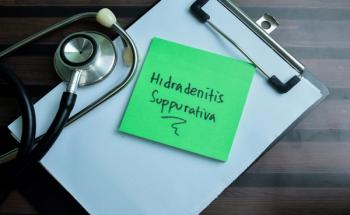
Dr Isabelle Arnulf Highlights Efficacy, Safety of Lower-Sodium Oxybate in Idiopathic Hypersomnia
Isabelle Arnulf, MD, PhD, senior neurologist, and professor, Neurology, Sorbonne Universités, Pierre and Marie Curie University, discusses findings of significant improvement observed in patients with idiopathic hypersomnia undergoing lower-sodium oxybate treatment.
Patients with idiopathic hypersomnia exhibited significant improvements in excessive daytime sleepiness and sleep inertia when randomized to receive
Transcript
Already
We studied the effect of lower-sodium oxybate in
So, they are late to school and late to work, it's a very disabling disorder, and until now, there is no approved treatment for this rare disorder. And what we found in this study was that lower-sodium oxybate was really effective. It was tested in a large group of patients, 154, two-third were women, and the dosing was progressively addressed in each patient, depending on the investigator's decision.
The idea was to use either one dose in the evening or one dose in the evening and one at night, as in narcolepsy. The single dose in the evening was because some patients may not wake up in the middle of the night to take the second dosage. They have difficulty waking up in the morning, it’s the same in the middle of the night.
So, for this purpose, it was possible to adapt and adjust for every patient that they could be able to take and that they tolerate. This first part of the study was open, and we knew for each patient which dose we were giving, and then they were randomized to receive either the drug or placebo in a double-blind manner.
Those who were on placebo clearly worsened immediately since the first night and during the 2 weeks of withdrawal, and those who stayed on lower-sodium oxybate kept the improvement the drug added, they were allowed to take the drug.
So, there was only 2 weeks without the drug in the placebo group, and the difference was highly significant. It was –6.51 on what we call the
Another advantage was that it really mended the sleep drunkenness. This inertia in the morning disappeared, and that's very important because patients will not be late at school and at work the next morning. Other parts of study, such as how do you work, what is your ability to work, to drive, was really better. It's a big success and we are really happy because it's a rare, neglected disorder that nobody had worked on, because it's rare—it's really disabling.
The other thing that we found was that even a single dose in the evening could be effective in patients, which is not the case in narcolepsy. As a consequence, each clinician will be able to adjust the dose to his or her patient, it will be mostly other patients. Also, the advantage of decreasing the risk of adverse effects, because you try to find the exact dose that is both efficacious and devoid of side effects in patients.
Of course, we found the same side effects that are known in narcolepsy, including nausea for example, headaches and dizziness. We know that from the narcolepsy use, which is now for the last 15 years we are using it, and we know what should be done to avoid it, such as taking the drug just before sleeping, not staying up after having taken the drug,
If something is experienced in the beginning, we might use some dopamine inhibitor or other drugs at the beginning of the study, and then after using the drugs, this effect will then disappear. There was no surprise with the side effects, and they were even minimized by the fact that we could be able as investigators to adjust the drug dosage.
Reference
Dauvilliers Y, Arnulf I, Foldvary-Schaefer N, et al. Placebo-controlled, double-blind, randomized withdrawal study of lower-sodium oxybate in adults with idiopathic hypersomnia. Sleep. 2021;44(suppl 2):A195. doi:10.1093/sleep/zsab072.493
Newsletter
Stay ahead of policy, cost, and value—subscribe to AJMC for expert insights at the intersection of clinical care and health economics.








































